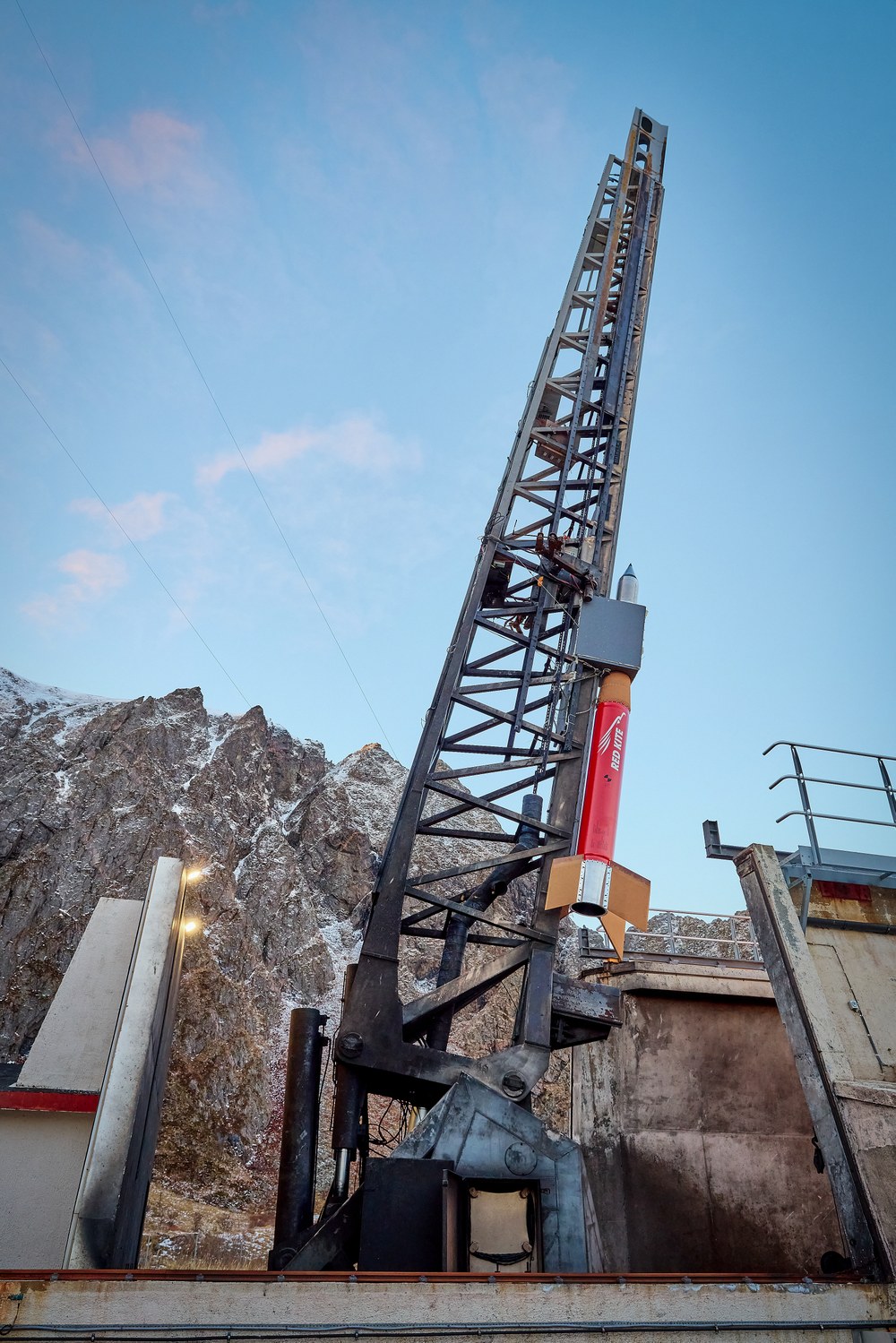Successful first flight of 'Red Kite'

- The high performance of the 'Red Kite' will enable heavier payloads for sounding rockets.
- The Air Breathing Propulsion Experiment – Technology Demonstrator (APEX-TD) experiment was tested during the first flight of the new rocket motor.
- The new rocket motor will go into regular operation in DLR's MAPHEUS programme for research in microgravity from February 2024.
- Focus: Spaceflight, sounding rockets
Sounding rockets require powerful rocket motors to reach space, where they then experience several minutes of microgravity before re-entering Earth's atmosphere and descending to the ground. A joint project carried out by the German Aerospace Center (Deutsches Zentrum für Luft- und Raumfahrt; DLR) and Bayern-Chemie has now succeeded in developing and qualifying a new solid-propellant rocket motor in the one-tonne class. On 13 November 2023, DLR's Mobile Rocket Base (Mobile Raketenbasis; MORABA) department of DLR's Space Operations and Astronaut Training facility launched the first research rocket to be powered by a single-stage 'Red Kite' motor from the Andøya Space Center in northern Norway. With an overall length of 6.6 metres and a launch mass of 1.5 tonnes, the vehicle reached the highest point of its flight path at an altitude of 71 kilometres. During the ascent, the rocket reached a maximum speed of 5150 kilometres per hour, which corresponds to a Mach number of just under five. The research rocket then splashed down in the Atlantic Ocean approximately 60 kilometres from the launch site. Extensive measurement data was transmitted to the ground station during the flight.
"We are extremely pleased about our successful collaboration with Bayern-Chemie. With Red Kite, the international research community now has a powerful new rocket motor for high-altitude research missions," said Anke Pagels-Kerp, DLR Divisional Board Member for Space, on the occasion of the successful first flight. "Scientists from various disciplines such as research in microgravity, atmospheric physics, supersonic and hypersonic technologies and New Space technologies now have improved opportunities for using sounding rockets as a cost-effective and flexible research and testing platform."
The Managing Director of Bayern-Chemie, Wolfgang Rieck, was delighted with the successful test and said: "Congratulations and compliments to the project team for this outstanding performance. We are all proud of our joint achievement and look forward to continuing the successful collaboration with DLR in series production."
Red Kite's high performance will enable increased payload capacities compared to the microgravity research programmes previously carried out in Europe. The design uses approximately one tonne of solid propellant, which Germany has manufactured for the first time. This is a significant step, combined with a significant increase in capabilities for rocket technologies. The motor has been designed for use primarily as the first stage of multi-stage research rockets. The 900 kilograms of composite propellant burn in 12 seconds and provide the high launch thrust needed for research rockets.
Initial flight and first experiment on board
During the Single Stage Operational Assessment of Red Kite (SOAR) mission, not only was the new rocket motor successfully tested in flight, but the experimental mission also carried a scientific payload from the DLR Institute of Aerodynamics and Flow Technology and the DLR Institute of Structures and Design. In the Air Breathing Propulsion Experiment – Technology Demonstrator (APEX-TD), the airflow of a supersonic combustion propulsion system was investigated, and suitable thermal protection concepts were tested. The data collected is now being analysed in detail.
At the end of 2019, DLR contracted Bayern-Chemie to develop and manufacture a one-tonne-class solid-propellant rocket motor. MORABA was responsible for integrating the Red Kite motor into a flight-ready vehicle as well as for the rocket's onboard computer, trajectory tracking using DLR's radar system and mission planning, which included extensive flight dynamics calculations. The solid propellant motor was successfully qualified together with the launch site operator Andøya Space, which was responsible for flight safety among other things. In the next step, it will go into regular operation in February 2024 as part of a two-stage sounding rocket for DLR's Materials Physics Experiments in Microgravity (Materialphysikalische Experimente unter Schwerelosigkeit; MAPHEUS) programme. In a two-stage configuration, Red Kite is able to carry more than 400 kilograms of payload for multiple experiments to an altitude of at least 250 kilometres. MAPHEUS-14 will continue the successful series of DLR high-altitude research rocket flights with a 3D-printing experiment in microgravity, among other activities.


